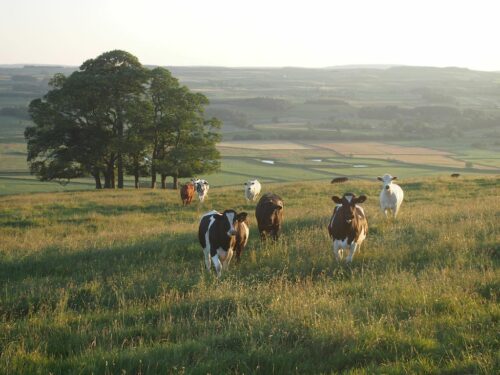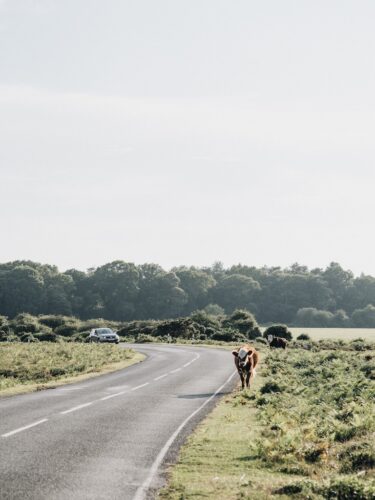Animal Care
Whether you have a furry friend at home or you have livestock, you need to plan for your animals in case of a natural disaster.
In particular, housing large animals and big numbers of animals on property requires consideration and planning in the event of an emergency.
Large animals/livestock can include horses, cattle, alpacas, goats, sheep and pigs.
 Bushfires, storms and extreme weather events pose a risk to animals and their welfare.
It is essential that you plan for the welfare of your animals to minimise stress and risk to their well-being.
Bushfires, storms and extreme weather events pose a risk to animals and their welfare.
It is essential that you plan for the welfare of your animals to minimise stress and risk to their well-being.
 Bushfires, storms and extreme weather events pose a risk to animals and their welfare.
It is essential that you plan for the welfare of your animals to minimise stress and risk to their well-being.
Bushfires, storms and extreme weather events pose a risk to animals and their welfare.
It is essential that you plan for the welfare of your animals to minimise stress and risk to their well-being.
Use the tabs below to get prepared Before, During and After an event.
Before a Disaster
Step 1: Know your Risk
Situations where you may not be at home when an emergency occurs.
Getting home may also not be possible due to road or bridge closures. Ask yourself if you have the capacity to transport all your animals off site? Your plan should cover this risk. Don’t wait for an emergency to give instructions as phone lines could be down or jammed. Get your animals ready. If you have multiple animals and livestock, it is important that you prepare for emergency situations.Step 2: Plan
- Know what to do with your animals.
- Prepare an animal emergency plan.
- Prepare your animal emergency kit.
Go to the SES’ ‘Get Animals Ready’ page
The booklet below has advice on keeping your animals safe in an emergency.Download the SES’ ‘Keep Animals Safe’ info
The booklet below has advice for animal holding establishments to prepare for an emergency.Download the DPI’s ‘Emergency Guide for Animals’
The booklet below provides information on protecting your pet during bushfiresDownload the WAP’s ‘Protect your Pet’ info
If you have horses, see the advice below for horse safety during disasters by DPI.Download the DPI’s ‘Horse Safety in Disaster’ sheet
If you have livestock, see the advice below for livestock safety during disasters by DPIDownload the DPI’s ‘Lifestock Safety in Disaster’ sheet
Make an emergency plan for your animals/livestock
Download the plan below to make your animal emergency planDownload the SES’ ‘Get Animals Ready’ editable PDF
Join your neighbourhood hub & get to know your neighbours
If you are already not part of your neighbourhood hub, find and connect with your hub leader if you are in Uki or Greater Uki. Get to know your neighbour and check in regularly with each other. You don’t have to best friends, it’s just good to know who your neighbours are (and who might need help or be able to offer help in an emergency).Go to RUKI’s ‘Neighbourhood Groups’ page
Step 3: Prepare
Prepare for what happens if an emergency occurs and you are away from your home and your animals.
There may be situations where you cannot get back to your home in an emergency. See tips below to be prepared if you are not at home.- Talk to family, friends, neighbours etc., to make arrangements for your animals to be moved to safety if you are not at home.
- Consider organising a spare key to access your house or yard.
- Tell them where to find your Grab & Go Bag for your animals.
Practice your plan
Like people, animals can be affected by stress in an emergency and may behave differently. Practicing your plan helps you and your animals to:- Get familiar and build your confidence and speed of getting your animals in or out of a float/trailer.
- Prepare yourself with how long it may take you to relocate animals and whether you need others to help you.
- Identify further risks and improve your plan to minimise stress in an emergency for your animals and yourself.
Prepare your animal emergency kit
If you have horses, the plan below will help you prepare a horse emergency kit. For your other animals and pets, the advice below will help you prepare a bag in the event of an emergency. Prepare a “Grab and Go” bag for your animals. It may be worthwhile to speak to your vet about medication that may help reduce stress and anxiety in your animals or pets leading up to a severe weather event such as a thunderstorm.During a Disaster
Keep updated of severe weather warnings and severe thunderstorm warnings on:
- the NSW SES website
Go to the SES’ ‘Community Advice’ page
- the Bureau of Meteorology website
Go to the BOM’s’ ‘Warnings’ page
- Local and statewide Media across NSW
Monitor the progress of the event. Follow your animal emergency plan if you need to leave.
Call 1800 814 647 the Agriculture and Animal Services Hotline in an emergency. The hotline can help you with:- emergency fodder
- emergency stock water (where there is an immediate animal welfare concern)
- animal assessment and veterinary assistance
- stock euthanasia and burial
- livestock feeding and management advice
- the care of animals including pets and companion animals in evacuation centres.
Helping native animals in an emergency
Go to the WIRES website for more information on helping native animals during disastersGo to the WIRES’ ‘Emergency Information’ page
 If you find an injured native animal:
Call WIRES on 1300 094 737
or Tweed Valley Wildlife Carers: 02 6672 4789
Both operate 24/7 hotlines.
If you find an injured native animal:
Call WIRES on 1300 094 737
or Tweed Valley Wildlife Carers: 02 6672 4789
Both operate 24/7 hotlines.
After a Disaster
It is important that you assess if there are hazards around you once an disaster event has passed.- Check on your animals and their welfare.
- Take care on the roads if you are driving. Report stray animals in your community pages. Members of your community may be attempting to locate their animals that may have run loose during an extreme weather event.
- Report injured wildlife. Call WIRES at 1300 094 737 (24/7 hotline)
- If you need assistance from the NSW SES because you have damage to your property or access to your property is blocked, call 132 500.
- If you need assistance with your livestock, call the Agriculture and Animal Services Hotline at 1800 814 647.

- Continue listening to your local radio station for information, updates and advice
- Check to see if your neighbours need help with their animals.
Stay informed and go to the useful Apps, Numbers & Links page to download relevant apps and bookmark links.
After-hours Emergency Vets North Coast Emergency Vets (Bangalow) 0424 054 056 Animal Emergency Services (Carrara) 0424 054 056